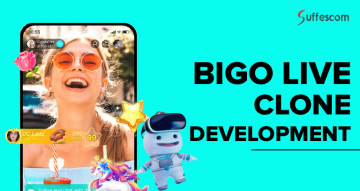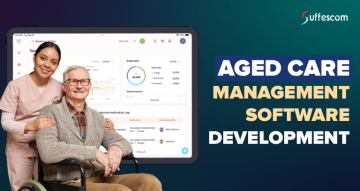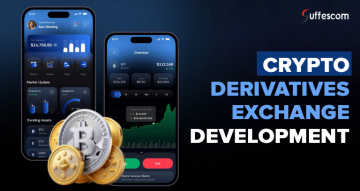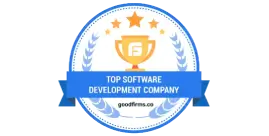Bill Payments App Like My Optus - Development Cost and ROI

The global digital payments market is experiencing a promising change, leading to extreme growth. It is forecasted to reach USD 11.55 trillion by 2024, with a growth rate of 9.52%. The market is thriving; it is a great investment opportunity.
So, make hay while the sun still shines!
The larger question is how much it costs to develop a bill payments app like My Optus and how to maximize its returns.
Scalable Bill Payments App Like My Optus
Develop a market-ready, feature-rich, and return-oriented bill payments app like My Optus. Get maximum and minimum with Suffescom Solutions! Leave a mark in the market with My Optus clone.
Cost of Developing Bill Payments App Like My Optus
The cost incurred on basic My Optus clone app development ranges from USD 15K to 20K. However, multiple factors affect the cost of My Optus like app development. The following factors can increase or decrease it-
App Features and Functionality
- Number of features: The more features, the higher the cost
- Complexity of features: Inclusion of complex features like API integration, etc.
UI/UX Design
- Design’s user-friendliness: It takes skills and resources to create user-friendly designs.
- Design complexity: Intricate designs need longer development time.
Platform Compatibility
- Native platform development: Development processes for native platforms need less cost.
- Cross-platform development: Apps compatible with multiple platforms incur higher costs.
Third-Party Integrations
- Number and complexity: Higher and more complex third-party integrations increase the development cost.
- External services integration: Incorporating complex services like payment gateways.
Development Processes
- Expertise: The more expert the developers are, the higher the developer cost but the lesser the turnaround time.
- Use of tech stack: The selection of tech stacks, such as frameworks and programming languages, affects the development cost.
- In-house or outsourcing: In-house is expensive but offers higher control, while outsourcing is budget-friendly but less controllable.
Backend Development and Database Setup
- Complexity of backend architecture: The application of large codebases, multiple data source management, and security considerations increase the development cost.
- Database security: Website security analysis, Google Cloud Sensitive Data Protection, and other security compliances affect the cost.
App Testing and QA
- Multiple testing methods: Depending upon the development types, the testers apply various testing methods.
- Project’s scale: More testing methods are applied if the project’s scale is higher.
App Store Launch & Post Launch
- App Launch: Various app store launches and marketing methods need a significant budget for retaining users.
- Maintenance and updates: Ongoing updates and bug fixes are vital.
Here’s the cost breakdown-
| Project Phase | % Share in Dev Cost |
| Requirement Analysis & Development Planning | 10% |
| UI/UX Design | 15% |
| Frontend & Backend Development | 45% |
| Database Management & API Integration | 10% |
| Security & Compliance Setup | 5% |
| Testing & Quality Assurance | 10% |
| Deployment | 3% |
| Post-Launch Maintenance | 2% |
To understand the approximate cost of developing a bill payment app like My Optus, it is important to understand the tech stack types and their functions!
| Type | Name | Function |
| Frontend | React Native/Swift | Cross-platform and native mobile app development |
| Frontend | Node.js | For server-side application logic |
| Backend | Django | Web application backend framework and APIs for secure transactions |
| Database | MongoDB | NoSQL database for flexible data storage |
| Database | MySQL | Database management system |
| API | REST API | Client-server communication |
| API | GraphQL | For efficient data fetching |
| Payment Gateways | Stripe | For secure payment processing |
| Authentication | OAuth | User authentication |
| Push Notifications | Firebase cloud messaging | Send real-time notification |
| Storage | Google cloud storage | For efficient data storage |
| Security | SST Certifications | Encrypts data transmission |
| Analytics | Google Analytics | Tracking app usage and user behavior |
| Monitoring | New Relic | Monitoring app performance |
| Hosting | AWS EC2 | Scalable cloud server hosting |
| Version Control | GitHub | Code repository |
Multiple Monetization Models for My Optus Clone
Cost is one aspect of the story. The clearer picture comes out only when the monetization models are unveiled. Here are the different monetization models that aid in increasing the ROI on developing bill payments apps.
Pay to Download
Several app owners charge users to download their apps. This is a usual monetization strategy: the user has to pay to download the My Optus clone app.
One catch with this method is that the app must offer exceptional and exclusive features and entice potential consumers to pay a fee to download it.
In-App Advertising
Using the in-app monetization model, app owners can display advertisements of complementary businesses and charge a commission in return. The app earns revenue based on clicks and impressions.
The Best My Optus like App Development Service is Just a Click Away!
To witness the most exceptional My Optus like app development services, all you need to do is to connect with Suffescom Solutions! So, without further ado, connect now for a no-cost consultation.
The app often displays the following ads-
- Banner Ads
- Interstitial Ads
- Video Ads
- Native Ads
This model can hamper the user experience, as users face inconvenience during normal usage. To tackle this, app owners often use the next monetization model.
Freemium Model
The Freemium model has two user types: free and premium. Free users can use the basic app functionalities, but the ads flash on their screens, hampering the user experience.
On the contrary, premium users get the app's basic and advanced functionalities without having to watch ads. The owners can charge a set amount to premium users.
In-App Purchases
As the name suggests, users can purchase additional features, services, or content by paying a one-time charge. This model lets users enjoy additional functionalities by paying extra, enjoying a better app experience, and distinguishing themselves from others.
Users can enjoy the additional functionalities by paying once or signing up for a weekly, monthly, or yearly subscription.
Sponsorship, Partnership and Promotion
App sponsorship and partnership strategies include working with various brands to promote their products and services within the My Optus clone app. The app owners select the brands that align with their business goals and get mutual benefits.
The branded content must integrate with the app’s interface and ensure greater value to the users like-
- Providing discounts
- Delivering exclusive offers
- Useful and additional functionalities
Marketing programs help increase conversions and eventually skyrocket sales graphs.
Data Monetization
This model includes collecting and utilizing user data to increase revenue. Its basic aim is to provide crucial insights to advertisers, marketers, and businesses by analyzing user behavior, trends, and preferences.
App owners can anonymize and gather user data to offer targeted advertisements, market research, and tailored recommendations.
There are plenty of monetization models that ensure greater returns on investments. But it all boils down to development practices; if the developer is equipped with the right knowledge and expertise to develop a bill payments app like My Optus, then it's good news! A contrary scenario won’t work.
Suffescom Solutions - Reliable for My Optus Clone App Development
There are plenty of development services in the market. Why is Suffescom Solutions Inc. an ideal choice? The answer lies in our client testimonials. Our clients refer to us as the HONEST TEAM WITH GREAT SKILLS.
With more than 13 years of experience and expertise, we have delivered more than clients' expectations. We are a team of skilled designers, developers, testers, marketers, analysts, customer support executives, and more.
Personnel at Suffescom Solutions leave no stone unturned in delivering satisfactory results with minimum development turnaround time.
Here are a few reasons why you must consider Suffescom Solutions for My Optus like app development:
- No-cost app development consultation
- Agile methodologies for development project
- Faster turnaround time
- Expertise in responsive clone and white-label applications
- Apps with faster time to market
My Optus Clone - As Authentic As Certified SSL Certificate
Yes, you read it right! Suffescom Solutions provides the best in class and authentic My Clone app development services as no one else can. Connect now to explore!
FAQs on My Optus Like App Development
How much does developing a bill payments app like My Optus cost?
It takes USD 15K to 20K to develop a My Optus clone app, though many other factors alter the cost of designing, developing, and marketing the app. Such factors include feature complexity, tech stack, and testing methods.
It is important to focus and determine the factors before commencing the development process. This pre-planning helps to save costs and get things done within the budget range.
How can My Optus clone app generate revenue?
Any investment must bring higher returns; the same goes for My Optus app development. Plenty of monetization models can help to ensure a significant and constant returns on Optus clone app development.
With the assistance of experienced developers, app owners can use freemium, in-app purchases, and subscription models to generate revenue against the development of bill payment apps like My Optus.
What tech stack is suitable for My Optus clone app development?
From backend, frontend, database, and analytics, various tech stacks are used to develop bill payment apps like My Optus. The ideal tech stack includes React Native/Swift for frontend, Django for backend, MongoDB for database, Stripe for payment gateways, OAuth for authentication, Google Cloud for storage, and various others.








